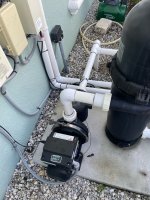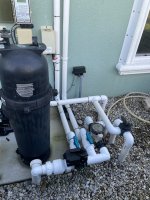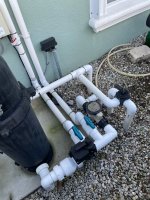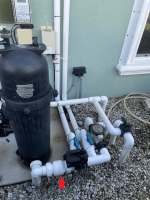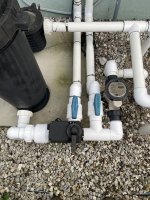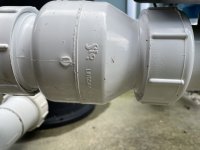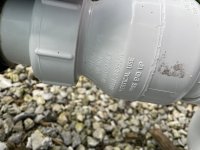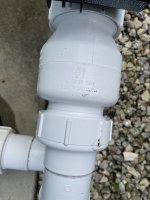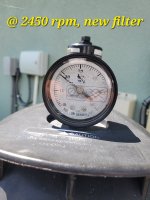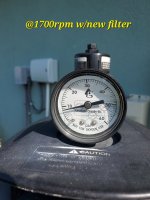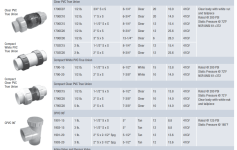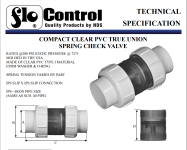- Jan 1, 2024
- 15
- Pool Size
- 8000
- Surface
- Plaster
- Chlorine
- Salt Water Generator
- SWG Type
- Pentair Intellichlor IC-30
Hello everyone, I have done a search and can't find anything specific to my situation, a few are close but a little different so I thought I would post my concern and see if anyone can help me solve it. My wife and I just had the roof replaced on our home a month or so ago and ever since the solar panels were reinstalled, we have had an intermittent thumping noise (like a bass drum) that occurs every 5 seconds or so and continues for about a minute after the pool pump shuts down and just before the solar panels start to drain.
I have been able to replicate it and isolate it to the solar panels draining by manually turning off the pool pump. If I turn off the supply and return lines from the solar panels as soon as I hear the thumping the noise will stop, when I then open the valves back up the noise begins again. Once the noise has occurred for 30 seconds to a minute it will stop and then I hear the solar panels drain. I have noted that the vacuum gauge on the pool filter will jump in time with the thump noise.
I think either the check valve just after the filter is faulty, or possibly the vacuum relief valve is bad for the solar panels, although the panels seem to drain ok (I does take about a minute before they begin to drain, not sure if this is normal as this is our first pool and I never paid all that much attention before). I do get the 30 second or so burst of bubbles when the solar panels are activated, and I have seen no bubbles during solar panel use other than initial start up.
I have posted pictures of my pool equipment set up and a link to a you tube video where I am able to replicate the noise, although the noise is generally louder than it seems on the video. Thank you for your help
I have been able to replicate it and isolate it to the solar panels draining by manually turning off the pool pump. If I turn off the supply and return lines from the solar panels as soon as I hear the thumping the noise will stop, when I then open the valves back up the noise begins again. Once the noise has occurred for 30 seconds to a minute it will stop and then I hear the solar panels drain. I have noted that the vacuum gauge on the pool filter will jump in time with the thump noise.
I think either the check valve just after the filter is faulty, or possibly the vacuum relief valve is bad for the solar panels, although the panels seem to drain ok (I does take about a minute before they begin to drain, not sure if this is normal as this is our first pool and I never paid all that much attention before). I do get the 30 second or so burst of bubbles when the solar panels are activated, and I have seen no bubbles during solar panel use other than initial start up.
I have posted pictures of my pool equipment set up and a link to a you tube video where I am able to replicate the noise, although the noise is generally louder than it seems on the video. Thank you for your help


